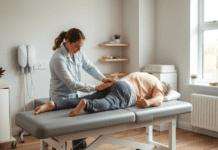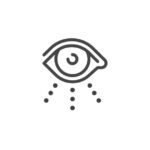Last Updated on February 10, 2025 by Bisma Sehar
Read this first if you’re wondering if your hospital should use remote patient monitoring (RPM) software. Then, we’ll look at reimbursement issues, privacy concerns, and how to use remote monitoring to manage chronic conditions. You may even be interested in learning more about how remote patient monitoring can help you improve the quality of your patients’ lives. And don’t forget about the benefits of remote patient monitoring! Here are a few reasons why remote patient monitoring is beneficial to healthcare facilities:
Table of Contents
Reimbursement of remote patient monitoring systems
Reimbursement for remote patient monitoring systems has recently been improved. Medicare now pays $21 per patient for the initial enrollment in the remote patient monitoring program. The reimbursement is based on the number of minutes of patient communication and the CPT code 99091. So if your practice meets the minimum criteria, you could earn up to $210 per month. But to get reimbursed, you need to provide remote monitoring for 20 minutes per month.
The Centers for Medicare and Medicaid Services (CMS) recently released CPT codes that allow providers to bill for remote patient monitoring. The new codes will encourage providers to adopt remote monitoring. The CMS said this is the first step to recognizing remote patient monitoring. The agency will continue to closely monitor the work of the CPT Editorial Panel to refine the code sets for this technology. While it is still unclear what exactly constitutes a remote patient monitoring service, CMS did clarify that the patient must give informed consent and that they should document the information in the medical record.
Several states have adopted their guidelines for reimbursement of remote patient monitoring. For example, Medicare Part B patients must pay 20% of the cost of the remote monitoring system, consent to the service from a doctor or other qualified healthcare professional, and monitor for a minimum of 16 days per billing period. In addition, a remote patient monitoring device must sync physiologic data with a medical device and meet FDA definitions to be covered.
Read more: 5 Reasons You Should Still Consider Getting a Degree in Healthcare

Privacy and security concerns
While remote patient monitoring offers clear benefits, many patients are concerned about privacy and security. In addition, the potential overuse of data from remote monitoring devices could lead to missed diagnoses and delayed intervention. Moreover, overdiagnosis could create unnecessary health anxiety for patients. To mitigate these concerns, health systems should develop and implement adequate cybersecurity controls. To understand how remote monitoring systems work, here are some guidelines:
The National Cybersecurity Center of Excellence’s Securing Telehealth Remote Patient Monitoring Ecosystem offers an example architecture and detailed guidance on addressing common cybersecurity challenges. The guidelines also recommend that end-to-end risk assessment is performed for all technology solutions, taking into account the unique characteristics of the organization, the settings, and variations in operations. Foley will continue to monitor privacy and security concerns associated with telemedicine and digital health. The firm’s Telemedicine team is experienced in this field and has extensive knowledge about security issues related to telehealth systems.
The NIST National Cybersecurity Center of Excellence released the final version of its Securing Telehealth Remote Patient Monitoring Ecosystem guidance. This document addresses privacy and security concerns posed by traditional patient monitoring platforms and equipment used outside the hospital setting. In addition, telehealth platforms are increasingly incorporating third-party platform providers and internet or cloud technologies. As with all new technologies, entities should use appropriate controls and protocols to protect patients’ privacy.
Managing chronic conditions with remote patient monitoring
Remote patient monitoring for chronic conditions offers reliable physiological measurements and patient self-management capabilities. The UHN is evaluating a remote patient monitoring system, Medly, that can help manage complex chronic conditions. Patients will be provided with a mobile phone and a home medical device to collect physiological measurements. These measurements will be wirelessly transmitted to a data server. Automated self-care instructions and messages will be sent to patients depending on the readings. In addition, it can send alerts to the clinical team managing the patient’s chronic condition.
Managing chronic conditions through remote patient monitoring is crucial for managing chronic disease. Healthcare providers would have to rely on costly in-office visits for routine checkups and tests without remote monitoring. These visits would waste time that could have been better spent on caring for patients. However, this method of remote patient monitoring supports the long-term management of chronic diseases by enabling medical professionals to track vital signs, follow the patient’s condition, and monitor symptoms. Managing chronic conditions through remote patient monitoring enables physicians to manage patients while balancing the medical resources available to treat a patient.
Managing chronic conditions through remote patient monitoring is crucial for managing chronic disease. Healthcare providers would have to rely on costly in-office visits for routine checkups and tests without remote monitoring. These visits would waste time that could have been better spent on caring for patients. However, this method of remote patient monitoring supports the long-term management of chronic diseases by enabling medical professionals to track vital signs, follow the patient’s condition, and monitor symptoms. Managing chronic conditions through remote patient monitoring enables physicians to manage patients while balancing the medical resources available to treat a patient.
Managing chronic conditions through remote patient monitoring is a cost-effective and revenue-generating solution for healthcare providers. It allows chronically ill and elderly patients to remain in their homes, receiving care in the comfort of their own homes. These services are ideal for patients who don’t want to retreat to a care facility. Unfortunately, chronic conditions have a detrimental impact on a patient’s quality of life. With the use of remote patient monitoring software, physicians can intervene early in the event of a severe illness or an emergency.
Apart from that, if you are interested to know about Healthcare Apps then visit our health category.
















